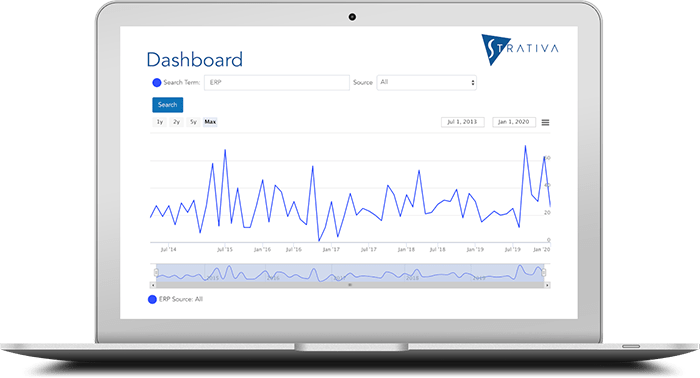
Among industry analysts, there is much talk these days about smart devices. The story is that information technology is being embedded in a host of products, from your household thermostat to your wristwatch to your toothbrush. These smart devices can be connected to each other and to cloud-based systems, resulting in an Internet of Things (IoT) that enables a whole host of new products and services. They also throw off enormous quantities of data—big data—that can be analyzed for insights and predictions and further leveraged for information-based services.
For most observers, all this is new and exciting. But there’s one industry where smart devices are very old news: manufacturing. Production machinery has been computerized –not for months, not for years, but for decades. CNC (computer numerical control) manufacturing equipment with embedded microprocessors became widespread in the 1970s. In fact, when manufacturers first started implementing MRP systems in the late-1970s, CNC equipment was already commonplace on the shop floor.
Even robots are old news in manufacturing, having been introduced around the same time.
Furthermore, these were all connected devices. You could design a part on a CAD/CAM (computer-aided design/computer-aided manufacturing) system and produce it on a CNC machine without a printed drawing or hand-entering machine instructions. Today, manufacturing equipment is commonly networked on the shop floor, from large milling machines down to individual tools and measurement devices.
Most ERP Systems Do Not Leverage the Machine
Yet, for the most part, today’s ERP systems do not leverage those smart devices on the factory floor. In the typical factory, the intelligence of the factory equipment is used almost exclusively by manufacturing engineers, process engineers, and quality assurance professionals to control production. But when it comes to recording transactions for production control, inventory, or accounting, they are often performed by human operators hand-entering the data.
The factory machine knows how many parts it produced, but too often ERP systems don’t get that information from the machine. They require a human operator to manually enter the order number and the quantity produced. Similarly, an automated test machine knows how many parts passed or failed a quality test. But when it comes time to record that information in the ERP system, a human operator is often called upon to enter the order number, the quantity rejected, and a reason code.
The problem with this approach is obvious: transactions are often entered long after the fact. If there are work order variances, it is often difficult to know whether the variances are real or if parts were miscounted, for example. Certainly, it is too late to take corrective action. Production reporting thereby becomes an accounting exercise, not directly relevant to manufacturing, further discouraging production personnel from ensuring timeliness and accuracy of data entry.
Some ERP vendors propose bar-coding as a solution. While bar-coding certainly has its place in manufacturing, it still requires a person to point the gun, shoot the label, and usually, enter a quantity. Why doesn’t the ERP system simply ask the machine for that information?
Manufacturing Execution Systems (MES), such as those offered by Rockwell Automation, Wonderware, Honeywell, Camstar, and many others, do typically interface directly with factory equipment. But many factories do not have an MES, or if they do, it may be only weakly integrated with the ERP system.
Employment Trends Exacerbate the Problem
Back in the 1970s, and even up to the turn of the millennium, reliance on human operators to enter data was a weak link in ERP, but it was not as great a problem as it is today.
There are two trends in manufacturing employment that are making the problem worse.
- Due to automation (all those smart machines), manufacturing productivity continues to increase. In other words, stated negatively, in many plants there simply are not many workers with time to enter transactions.
- Those that are still working on the shop floor are typically at two ends of the spectrum. There are highly skilled personnel who oversee, monitor, and maintain all those smart machines and low-skilled workers to take care of the tasks that require manual labor.
When it comes to data entry, the highly skilled (usually salaried) personnel cannot take the time to do it, and the low-skilled hourly workers often do not have the skills to do it accurately.
As part of a strategic IT roadmap project, we recently visited one of our client’s factories and heard directly about this problem. The hourly work force was having trouble accurately entering data. Many of them were not English speakers, which one would think could be remedied by providing computer screens in the employee’s native languages. But, in fact, some of them could not read or write in their native languages. The company had simplified the data entry requirements as much as it could, but it continues to have problems with accurate reporting of production quantities.
The Best UI is No UI
A recent analyst briefing with one cloud ERP vendor, Plex, shows how this problem can be solved by leveraging the smart devices that are part of most manufacturing plants today. Although Plex offers a complete ERP system, it has its roots on the shop floor, and it includes a manufacturing execution system as part of its standard offering. The MES is not a third-party bolt-on: it is a native part of the system.
During a walk-through of a small demonstration “plant” in Plex’s offices in Troy, MI, the facilitator pointed to a large map of the United States on a flat-panel display on the wall. The display showed transactional activity in real-time as it was recorded in Plex’s multi-tenant cloud system. He noted that 50% of the transactions coming into Plex’s system originate directly from factory equipment—untouched by human hands. We believe this is the way of the future.
While many ERP vendors are doing great work to improve their user interface (UI) to be more intuitive, this is not the solution. The problem with data accuracy, quality, and timeliness will not be solved by having a more intuitive UI. It is by eliminating or reducing the need for human intervention as much as possible.
ERP talking directly to the machine is long overdue. When it comes to production reporting, the best UI is no UI.

